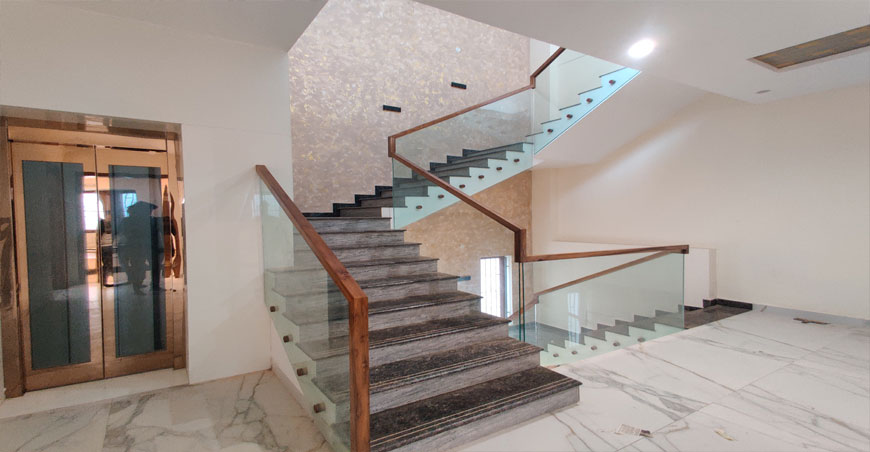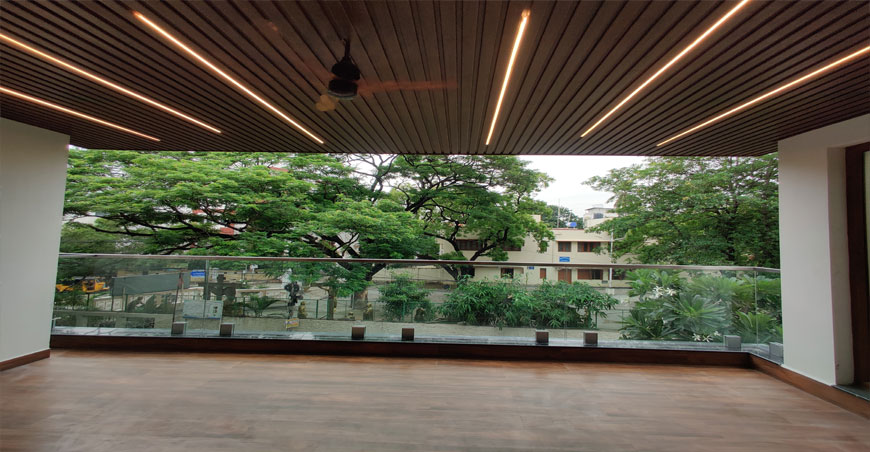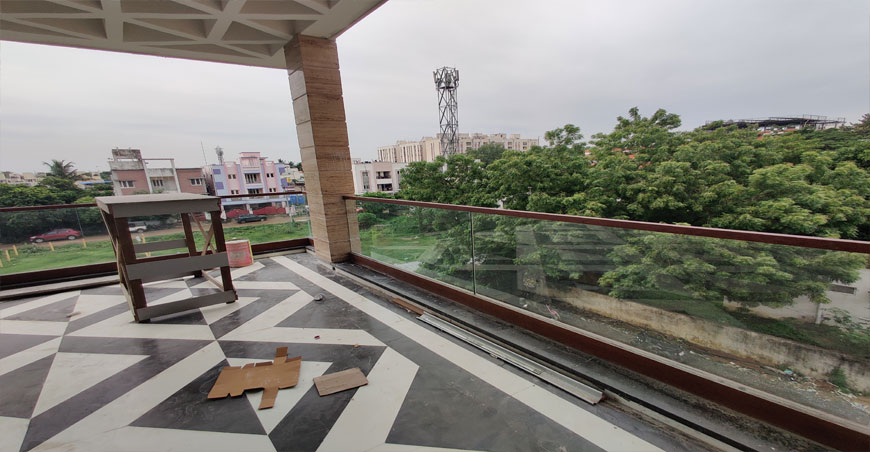In the ever-evolving landscape of architecture and interior design, modular glass hand railings have emerged as a versatile and innovative solution that combines flexibility, aesthetics, and safety. These railings, which consist of pre-fabricated glass panels and modular components, offer a unique blend of modern design and practical functionality. This essay explores the various aspects of modular glass hand railings, including their benefits, applications, design possibilities, and their impact on contemporary architecture.
One of the most significant advantages of modular glass hand railings is their inherent flexibility. The modular design allows for easy customization and adaptation to different spaces and requirements. Unlike traditional railings, which may require extensive on-site fabrication and installation, modular glass railings are composed of pre-engineered components that can be easily assembled and adjusted to fit various architectural settings.
This flexibility makes modular glass railings an ideal solution for both new construction projects and renovations. In residential settings, they can be used in staircases, balconies, and terraces, providing homeowners with the ability to personalize their space according to their preferences. For instance, different glass panel sizes, shapes, and finishes can be chosen to create a unique look that complements the overall design of the home.
In commercial settings, modular glass railings are particularly valuable for their adaptability. Office buildings, hotels, shopping centers, and public spaces can all benefit from the ability to reconfigure or expand railing systems as needed. This adaptability is crucial in environments where space usage may change over time, such as in flexible workspaces or multi-purpose venues. The modular nature of these railings allows for quick and cost-effective modifications without the need for major structural changes.
Modular glass hand railings are often chosen for their sleek, modern aesthetic. The use of glass as a primary material ensures a minimalist and elegant look that can enhance the visual appeal of any space. The transparency of glass allows for unobstructed views, creating a sense of openness and continuity that is particularly desirable in contemporary design.
The modular nature of these railings does not compromise their aesthetic appeal. On the contrary, it allows for a high degree of customization, enabling designers and architects to create visually striking railings that align with the overall design vision. For example, glass panels can be combined with different types of frames or handrails made from materials such as stainless steel, aluminum, or wood, creating a harmonious blend of textures and finishes.
Moreover, modular glass railings can be enhanced with various glass treatments, such as frosted, tinted, or patterned glass. These treatments add a layer of sophistication while also providing options for privacy or decorative elements. The result is a versatile design solution that can be tailored to suit a wide range of aesthetic preferences and functional needs.
Safety is a paramount consideration in the design of any railing system, and modular glass hand railings are no exception. The glass panels used in these railings are typically made from tempered or laminated glass, both of which are known for their strength and durability. Tempered glass is up to four times stronger than regular glass and is designed to shatter into small, blunt pieces if broken, reducing the risk of injury. Laminated glass, which consists of multiple layers bonded together with a plastic interlayer, offers additional safety by holding the glass together in the event of breakage.
The modular components, such as frames, connectors, and brackets, are engineered to provide robust support for the glass panels. These components are usually made from high-quality materials like stainless steel or aluminum, which are resistant to corrosion and wear. The precision engineering of these parts ensures that the railing system remains secure and stable over time, even under heavy use or in challenging environmental conditions.
In addition to their strength, modular glass railings are designed to meet or exceed building code requirements for safety. This includes considerations for load-bearing capacity, impact resistance, and the prevention of falls. By adhering to strict safety standards, modular glass railings provide peace of mind for homeowners, builders, and architects alike.
The versatility of modular glass hand railings makes them suitable for a wide range of applications. In residential settings, they are commonly used in staircases, balconies, and terraces, where their modern design enhances the overall aesthetic of the home. Their ability to create a seamless transition between indoor and outdoor spaces is particularly valuable in homes that emphasize open-plan living and a strong connection to the surrounding environment.
In commercial and public spaces, modular glass railings are often used in offices, hotels, shopping centers, and public buildings. Their sleek appearance and transparent nature contribute to a sophisticated ambiance while maintaining safety and functionality. For example, in shopping centers or airports, modular glass railings can be used to create barriers along mezzanines or atriums, ensuring the safety of visitors while preserving an open, airy atmosphere.
In outdoor environments, such as around swimming pools, gardens, or rooftop terraces, modular glass railings provide a durable and weather-resistant solution. The use of high-quality materials ensures that the railings can withstand exposure to the elements without losing their structural integrity or visual appeal.
In an era where sustainability is increasingly important, modular glass hand railings offer several environmental benefits. Glass is a recyclable material, and advancements in glass production have made the process more energy-efficient and environmentally friendly. Additionally, the long lifespan of glass railings, combined with their modular design, reduces the need for frequent replacements, minimizing waste and the environmental impact of construction.
The modular nature of these railings also contributes to sustainability by allowing for easy reconfiguration or expansion. Instead of replacing an entire railing system, individual components can be added, removed, or replaced as needed, reducing material waste and extending the life of the installation.
Furthermore, modular glass railings can be combined with energy-efficient glass options, such as low-emissivity (Low-E) glass, to enhance thermal insulation and reduce heat transfer. This can help to maintain a comfortable indoor temperature, reduce energy costs, and contribute to a more sustainable building design.
Modular glass hand railings represent a perfect fusion of flexibility, modern design, and safety. Their ability to adapt to various spaces, combined with their sleek aesthetic and structural integrity, makes them a favored choice in both residential and commercial settings. As trends in architecture and design continue to evolve towards more open, adaptable, and sustainable spaces, modular glass railings are likely to play an increasingly important role in shaping the built environment. Whether used to enhance the beauty of a home, create a sophisticated commercial space, or ensure safety in public areas, modular glass railings offer a versatile and innovative solution for contemporary design challenges.





